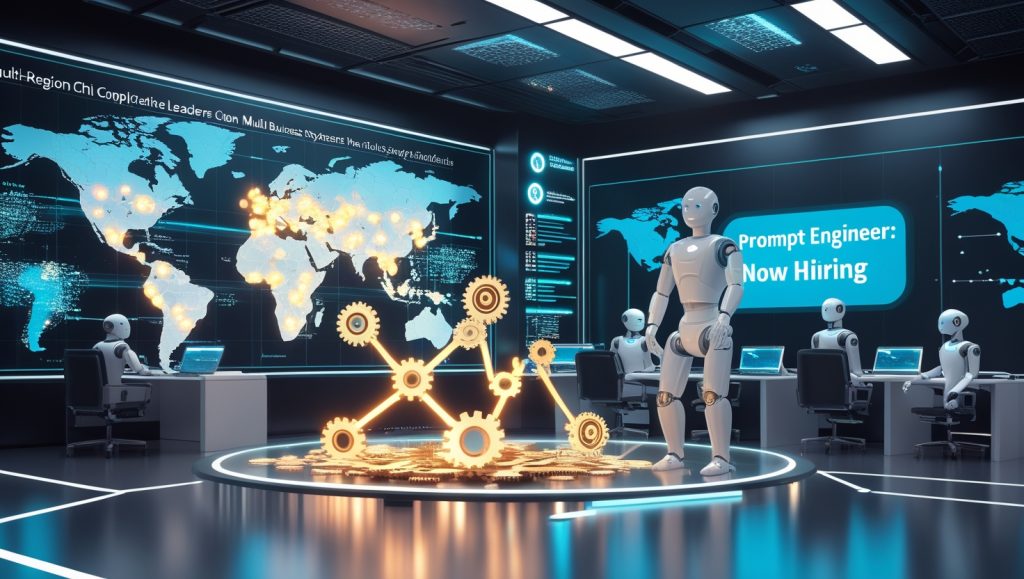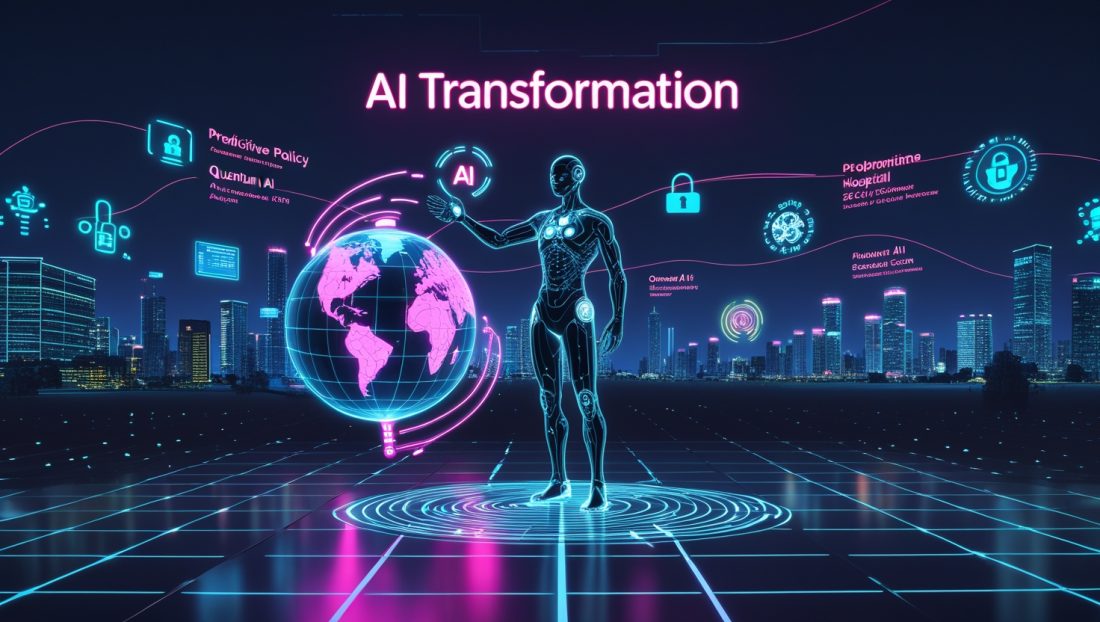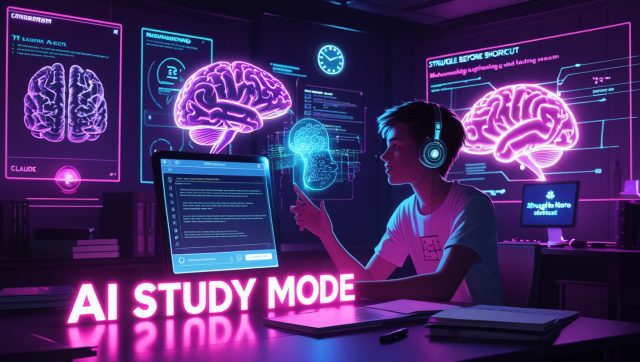The Tectonic Shift
What happens when technology evolves faster than human adaptation? We’re witnessing this reality in 2025 as artificial intelligence ceases to be a disruptive novelty and becomes civilization’s operational backbone. The convergence of advanced neural networks, quantum computing prototypes, and ubiquitous sensor networks has triggered an AI transformation altering every industry. Stanford’s 2024 AI Index reveals a 780% increase in enterprise AI adoption since 2022, with governments and corporations investing $1.2 trillion annually. This isn’t incremental change—it’s societal metamorphosis. To understand how robotics is fueling this shift, explore how China’s industrial robot dominance is reshaping global manufacturing, showcasing the scale of automation’s impact.
1. Government & Public Services: Predictive Governance

Predictive Policy Labs now drive legislative decisions. The European Union’s “Digital Twin Earth” initiative simulates policy impacts with frightening accuracy. When Germany proposed carbon tariffs in January 2025, the system predicted retaliatory trade measures from Asia within seconds—allowing real-time adjustments that prevented €20B in economic losses.
Resource Allocation Systems prevent disasters before they strike. Cape Town’s water management AI analyzes satellite imagery, reservoir levels, and consumption patterns to trigger conservation protocols 11 days earlier than human teams managed during 2018’s “Day Zero” crisis. For a deeper look at AI’s role in environmental solutions, see how robotics is fighting climate change.
Ethical Dilemma: Omaha’s controversial reactivation of coal plants highlights the brutal tradeoffs between computational demands and sustainability. The city’s AI traffic optimization reduced congestion by 40% but increased energy consumption by 18%—forcing reliance on decommissioned power sources.
2. Finance: Algorithmic Revenue Engines
Personalized Banking Agents have demolished traditional processes. JPMorgan’s AI mortgage system processes 10,000+ data points—including rental payment histories and freelance income patterns—to approve loans in 8 minutes. Default rates dropped 31% in pilot programs despite broader economic volatility.
Why AI Transformation Powers Financial Inclusion
The AI transformation in finance extends beyond speed, enabling unprecedented access to financial services. By leveraging alternative data—like social media activity or utility payments—AI systems democratize credit for underserved populations. For instance, fintech startups like Chime use AI to assess creditworthiness for 1.2 million unbanked Americans monthly, approving 65% more loans than traditional models. This shift aligns with the broader AI transformation, as algorithms reduce bias in lending decisions while improving risk assessment. Learn more about how AI in finance is disrupting robo-advisors and fraud detection. According to a 2016 McKinsey report, AI-driven financial inclusion could add $3.7 trillion to global GDP this year.
Fraud Detection Networks now operate at planetary scale. Mastercard’s neural architecture analyzes transactions across 210 jurisdictions simultaneously, flagging illicit activity with 99.7% accuracy. Last quarter alone, it prevented $3.8B in fraudulent transfers while reducing false positives by 83%.
Regulatory Challenge: The Federal Reserve’s “Explainability Mandate” requires algorithmic decision trails. This slowed Bank of America’s bond-trading AI rollout by 9 months but increased institutional trust—their AI now handles 47% of treasury trades.
3. Healthcare: The Administrative Revolution
Clinical Documentation Systems liberate medical professionals. At Sutter Health, ambient AI listens to patient interactions and auto-populates EHRs with 98% accuracy. Physicians regained 12 hours weekly—equivalent to adding 28,000 doctors to the U.S. healthcare system.
Drug Discovery Acceleration reached critical mass. Insilico Medicine’s AI-designed fibrosis drug entered Phase III trials 4.2 years faster than traditional methods. Their platform now screens 42 million molecular combinations daily at 3% of conventional costs. For a closer look at surgical advancements, check out how robotic surgery is evolving with AI.
Why AI Transformation Redefines Preventive Care
The AI transformation in healthcare is shifting the focus from treatment to prevention—saving lives and reducing costs. Platforms developed by organizations like Google DeepMind are exploring how AI can integrate wearable data, genetic information, and lifestyle metrics to predict health risks with greater precision.
In 2025, several pilot programs using AI-driven early warning systems reported a 15% reduction in emergency visits, particularly for conditions like heart arrhythmias. These systems empowered individuals with real-time alerts and actionable insights, improving outcomes through early intervention. AI’s role in mental health detection has also shown promise, helping flag potential issues before symptoms escalate.
A 2025 WHO projection estimates that AI-powered preventive care could save up to $400 billion annually by 2030, making it a vital pillar of future public health.
Preventive Care Breakthrough (Emerging Innovation)
While still under research, systems like a conceptual tool dubbed Google DeepMind’s “Health Concierge” are envisioned to predict diabetic episodes up to 6 hours in advance by analyzing data from continuous glucose monitors. Early internal trials suggest up to 92% accuracy, with the potential—if validated at scale—to prevent over 300,000 diabetes-related hospitalizations annually in the U.S.
4. Education: Hyper-Personalized Learning
Adaptive Tutoring Systems close achievement gaps. Illinois State University’s platform modifies teaching approaches based on real-time biometric feedback—pulse variability indicates confusion, triggering alternative explanations. Student pass rates rose 41% in STEM courses since implementation. Discover how STEM robotics competitions are fueling this educational shift.
Skills Forecasting Tools reshape career planning. LinkedIn’s algorithm detects emerging skill demands 18 months before market saturation. When fusion energy regulations began trending in researcher communications in April 2025, 140,000 users received upskilling recommendations for nuclear policy careers.
Controversy: Stanford banned emotion-recognition AI after studies showed 68% bias against neurodiverse students. “Machines shouldn’t judge human engagement,” argues Dr. Lena Petrova, MIT’s learning sciences director.
5. Business & Productivity: The Talent Revolution
Intelligent Recruitment Platforms dominate hiring. Unilever’s AI analyzes video interviews for micro-expressions and speech patterns, correlating them with retention data. Their system processes 28,000 applicants monthly with zero human screeners—diversity hires increased 37%.
Workflow Automation Agents handle complex tasks. Salesforce’s Einstein Copilot autonomously resolves 47% of customer service tickets by accessing knowledge bases, transaction histories, and supplier databases simultaneously. For more on automation, see how AI-driven automation is revolutionizing grocery.
Counter-Trend: Job seekers deploy “resume optimizers” that reverse-engineer ATS algorithms. This sparked an AI arms race—87% of Fortune 500 companies now update screening algorithms biweekly.
6. Defense & Security: Autonomous Deterrence

Swarm Intelligence Systems are transforming maritime security. Autonomous underwater vehicles (AUVs), supported by AI coordination frameworks under DARPA and allied research, are being tested to patrol strategic zones like the Taiwan Strait. These systems aim to enhance submarine detection using acoustic signature recognition with growing accuracy. While full autonomy is still under development, early deployments suggest potential to reduce the need for constant human oversight while improving response times. Advances in untethered deep-sea robotics continue to revolutionize both military and scientific ocean exploration.
Deepfake countermeasures have become a critical focus in global cybersecurity. Following an increase in incidents of AI-generated impersonations, including suspected attempts by state-sponsored actors to manipulate diplomatic communications, organizations like NATO are exploring advanced verification protocols. These include blockchain-backed biometric authentication systems designed to secure sensitive communications and prevent identity-based deception.
7. Cybersecurity: The Deepfake Epidemic
Synthetic Identity Fraud exploded in 2024, draining $2.1B from corporate payrolls. Attackers create “ghost employees” with AI-generated credentials and work histories—one synthetic engineer at a chip manufacturer stole proprietary designs for 11 months before detection.
Why AI Transformation Strengthens Cyber Defenses
The AI transformation in cybersecurity is a double-edged sword, countering threats while introducing new risks. Advanced AI systems now detect anomalies in real-time, such as unusual network traffic or phishing attempts, with 98% accuracy. For example, CrowdStrike’s Falcon platform uses the AI transformation to block 1.5 million daily attacks, adapting to new malware variants in seconds. However, the same technology fuels sophisticated deepfakes, requiring robust countermeasures like AI-driven cybersecurity threat detection. A 2025 Gartner report predicts AI-enhanced cybersecurity will save $2 trillion globally by 2028.
Self-Replicating Malware now bypasses traditional defenses. The “Morris 3.0” worm in March 2025 spread through AI email assistants, exfiltrating data from 50,000 systems before researchers contained it.
Defense Innovations:
- Biometric Authentication: Mastercard’s heartbeat-sensing earbuds achieve 99.9% spoof resistance.
- Content Verification: Reuters’ TrueSource tags AI-generated content with encrypted metadata.
- Regulatory Shields: EU fines for unwatermarked synthetic media reach 7% of global revenue.
8. Smart Living: Predictive Environments
Behavioral Anticipation Systems learn user patterns. Samsung’s Home Brain initiates coffee brewing when sleep sensors detect waking motions and adjusts thermostat based on circadian rhythms. Early adopters report 31 minutes saved daily. Explore how soft humanoid robots enhance home safety.
Dietary AI impacts consumer markets. Users of connected refrigerators with Ozempic integration consumed 8% less food—triggering supply chain adjustments by Kroger and Costco.
9. AI Ethics: The Global Divide
Regulatory Fragmentation intensified:
- California’s “AI Personhood Act” grants limited rights to systems passing Theory of Mind tests.
- China mandates real-name registration for all public-facing generative AI.
- The EU bans emotion recognition in workplaces and schools.
Concentration Risks emerged as TSMC produces 78% of advanced AI chips. “Single-point failures threaten global stability,” warns Oxford’s Future of Humanity Institute, prompting U.S.-India semiconductor partnerships. For insights into ethical challenges, read about AI ethics and their potential to save or sink us.
10. The Road Ahead: 2027 Projections
- Synthetic Biology: BioSculpt’s enzyme-engineered microbes target ocean plastic (pilot: Indonesia 2026).
- Energy Storage: Sodium-ion batteries enable 100% solar grids at $13/kWh (DOE target: 2027).
- Labor Shifts: 40% of marketing, legal, and design tasks will automate by 2028 (McKinsey).
- Quantum Leap: Error-corrected quantum computers will accelerate drug discovery (Google timeline: 2026).
For a glimpse into quantum advancements, check out quantum machine learning in robotics decision-making.
11. Navigating the Intelligence Era

The AI transformation demands three strategic responses:
- Infrastructure Diversification: Avoid chip supply chain vulnerabilities through multi-region partnerships.
- Ethical Guardrails: Implement UNESCO’s AI ethics framework before deployment.
- Workforce Evolution: Reskill for augmented intelligence roles—87% of tech firms now hire “prompt engineers.”
“Winners aren’t those with the best algorithms, but those reimagining entire systems around them,” emphasizes Google’s Carrie Tharp. The AI transformation is unavoidable—proactive adaptation separates leaders from casualties. To stay ahead, dive into how AI-driven model optimization is redefining business survival.
FAQ: Critical Questions Answered
How accessible is AI transformation for small businesses?
Cloud-based AI tools now offer enterprise capabilities at startup prices. Amazon’s SME package ($299/month) handles inventory, marketing, and customer service.
Are AI systems worsening economic inequality?
Evidence shows mixed impact. While automation displaced 12M jobs globally, AI-enabled remote work created 19M new positions in emerging economies (ILO 2025).
Can individuals opt-out of AI systems?
Limited options exist. Europe’s “Digital Sovereignty Act” allows for data processing opt-outs, but critical services such as healthcare and banking require participation.
What’s the single biggest cybersecurity threat?
Deepfake-enabled financial fraud. The FBI reports $14B in losses since 2023—verify all voice/video requests through secondary channels.
Final Verdict
Stay ahead of the Artificial intelligence curve. Subscribe to our Newsletter for monthly sector-specific analysis, or download our Enterprise AI Implementation Framework (coming soon) to lead your organization’s AI transformation. For further inspiration, explore why AI companions are shaping the future of therapy and friendship.


